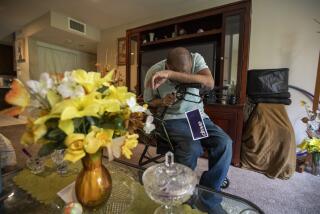Organ Supply Lags Behind Demand
- Share via
WASHINGTON — The number of patients awaiting organ transplants rose more than five times as fast as the number of transplant operations in the 1990s, the nation’s transplant network reported Thursday, documenting an increasingly acute need for livers, hearts and other organs.
The annual report by the United Network for Organ Sharing found slow growth in the number of organs from deceased donors, though the number of living organ donors more than doubled between 1990 and 1999. There was a continued rise in living donors who were unrelated to the recipients.
But the number of people on the transplant waiting list grew even more quickly, as medical techniques continue to improve and more hospitals offer transplantation.
The report also found that kidneys from living donors are more likely to survive than those from deceased donors. That’s partly because living donors are more carefully screened, and the surgeries are performed under more controlled circumstances, a network spokesman, Joel Newman, explained.
In 1999, there were 21,715 transplants performed in the United States, up 44% from 1990.
But there were 72,110 people on the national transplant waiting list at the end of 1999, more than three times as many as in 1990. As of Wednesday, it had climbed even higher, to 74,073.
The number of deaths on the waiting list has also more than tripled--from 1,958 in 1990 to 6,125 in 1999.
The data come just a few weeks after Tommy Thompson, the newly installed secretary of Health and Human Services, promised to launch a national campaign to increase organ donation. Department officials are working to pull together options for Thompson, who vowed action by May.
Most efforts to date have revolved around public education, encouraging families to discuss donation before the situation arises. Others have worked to improve the relationship between hospitals and organ banks so that more potential donors are identified.
“If we knew exactly what motivated organ donors, obviously, we would apply that to greater effect,” Newman said.
An estimated two in three Americans have not indicated their wishes about donation, he said. “If the family does not know what the wishes were, they seem to often say no, just because they don’t want to make the wrong decision.”
He also blamed myths surrounding donation. Among them: that doctors don’t try as hard to save people who are potential donors and that celebrities and rich people have a better chance at getting organs than other patients.
The network’s report provides statistics about organ transplants in 1999. Among the findings:
* There were 5,849 cadaveric, or dead, donors in 1999, up just 3% from 1998 and up 30% from 1990. Each donor produced an average of 3.6 organs.
* There were 4,712 living donors in 1999, more than double the number in 1990. The number of living liver donors more than doubled in just one year, from 85 in 1998 to 218 in 1999. In 1999, 5% of living donors gave a piece of their liver, with the rest giving one of their two kidneys.
* Of living donors, 35% were siblings, 18% were parents and 20% came from unrelated people.
* The portion of minority cadaveric donors increased from 18% in 1990 to 24% in 1999.
* Among cadaveric donors, 85% died due to head trauma or stroke.
More to Read
Sign up for Essential California
The most important California stories and recommendations in your inbox every morning.
You may occasionally receive promotional content from the Los Angeles Times.













